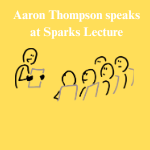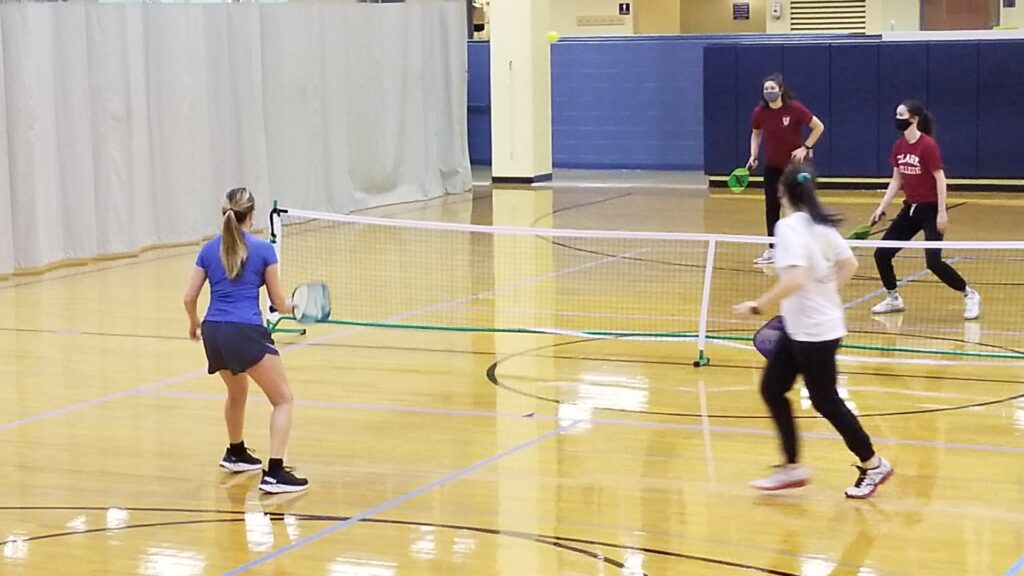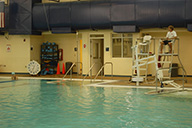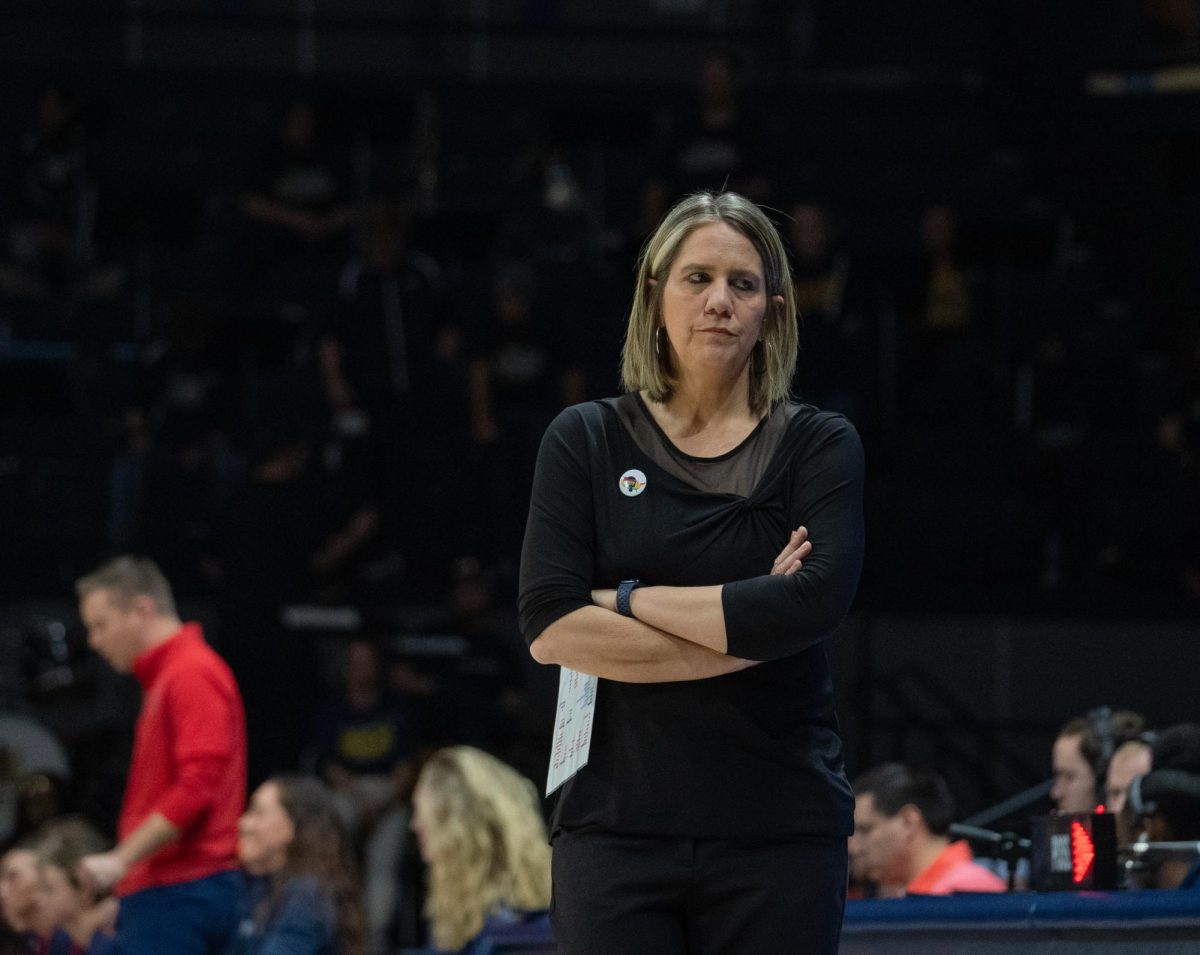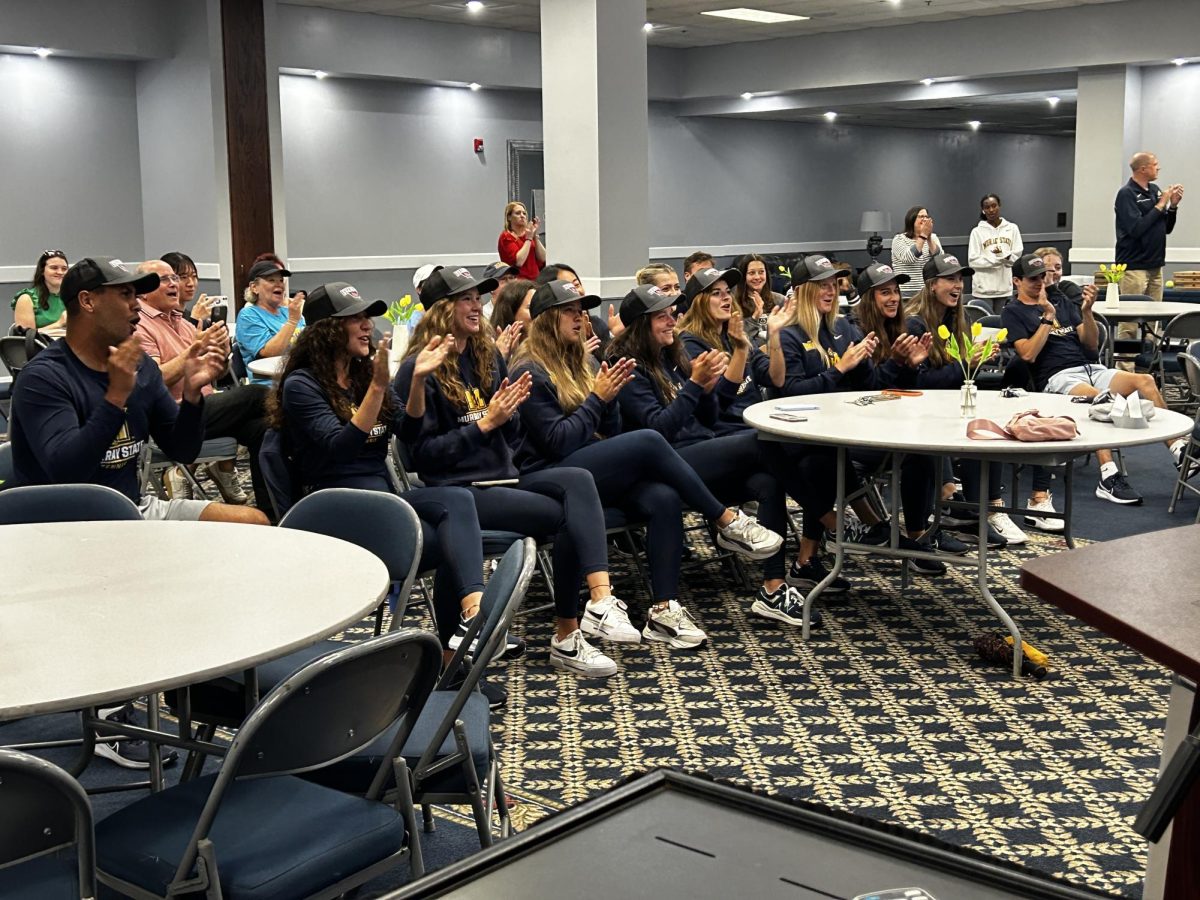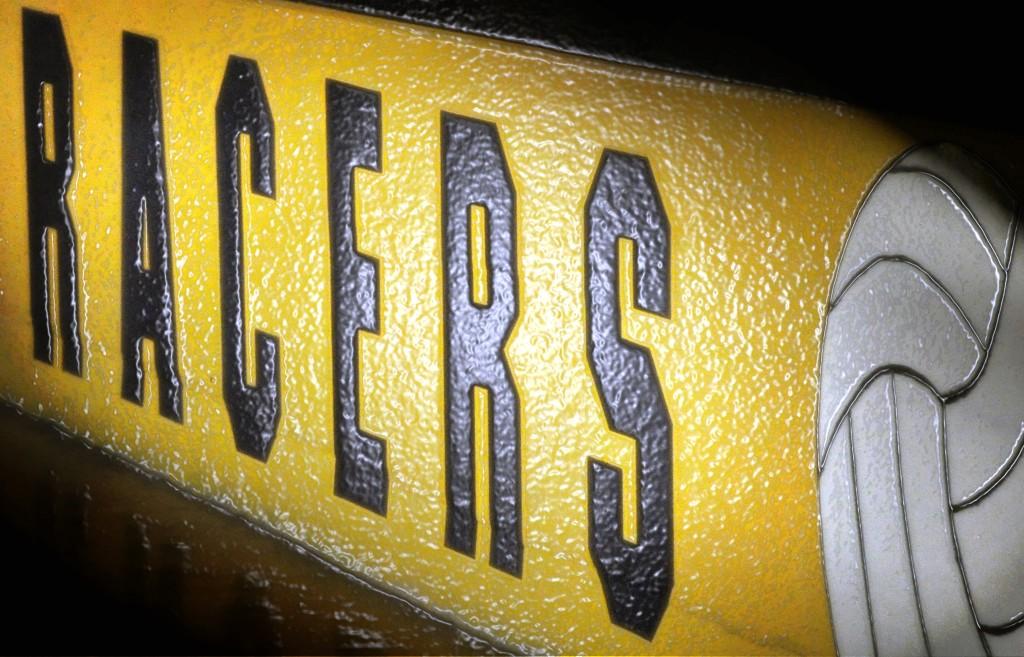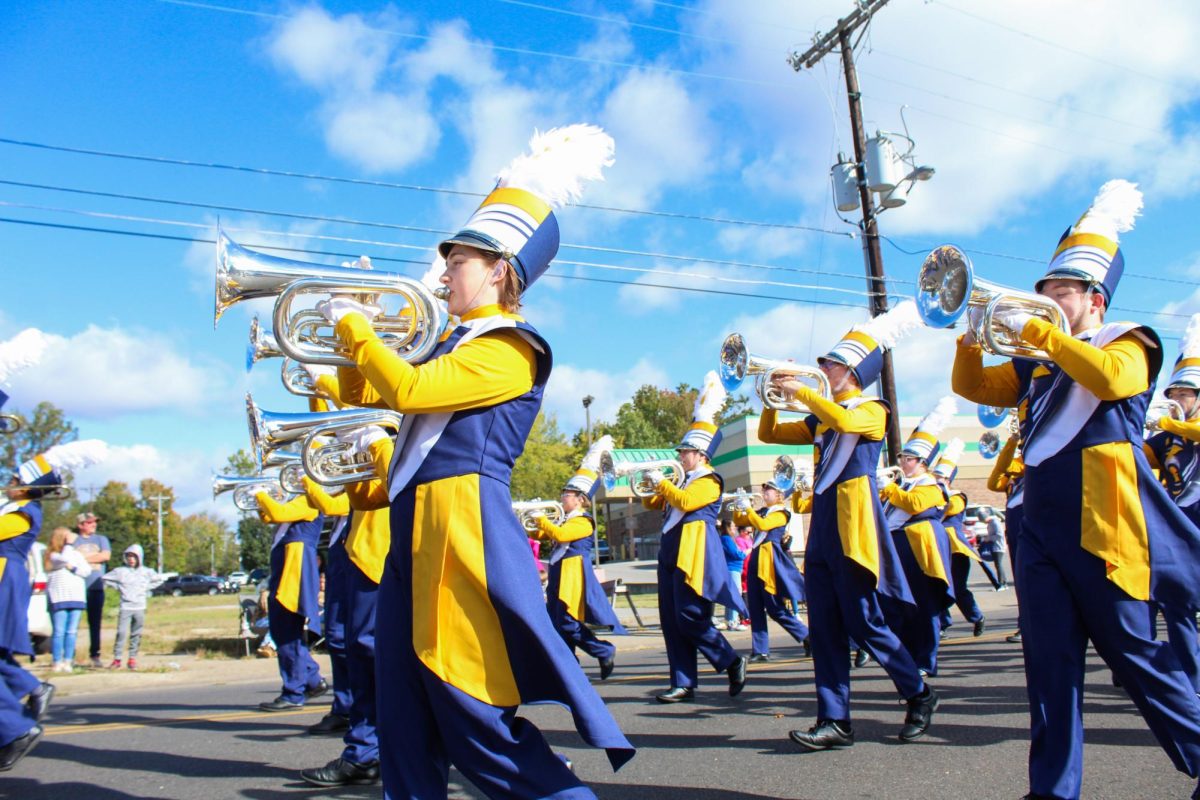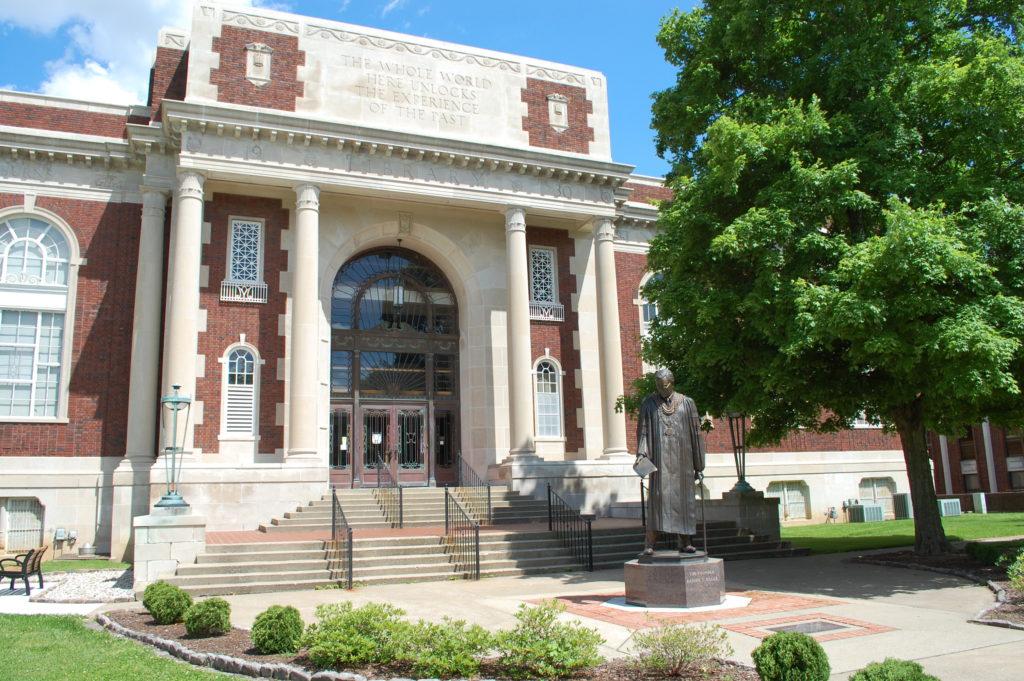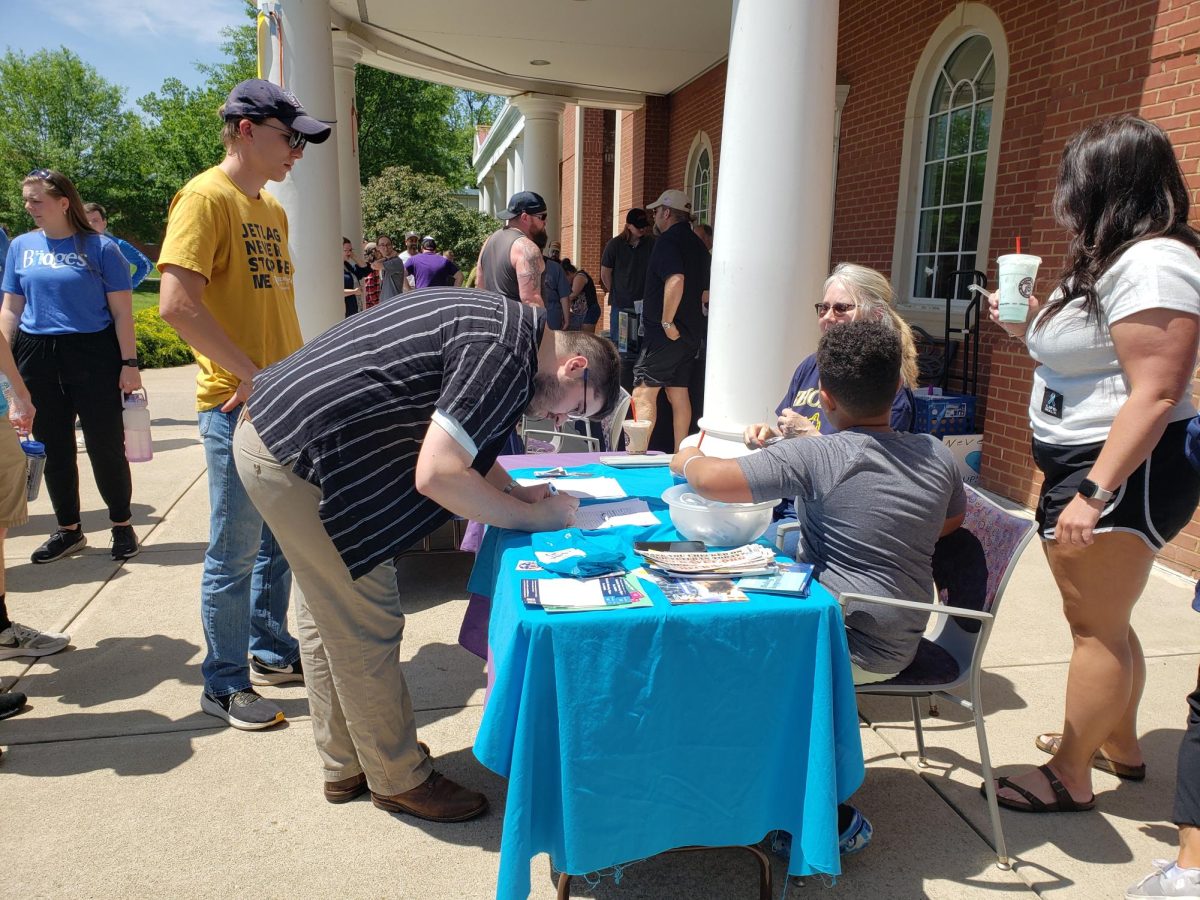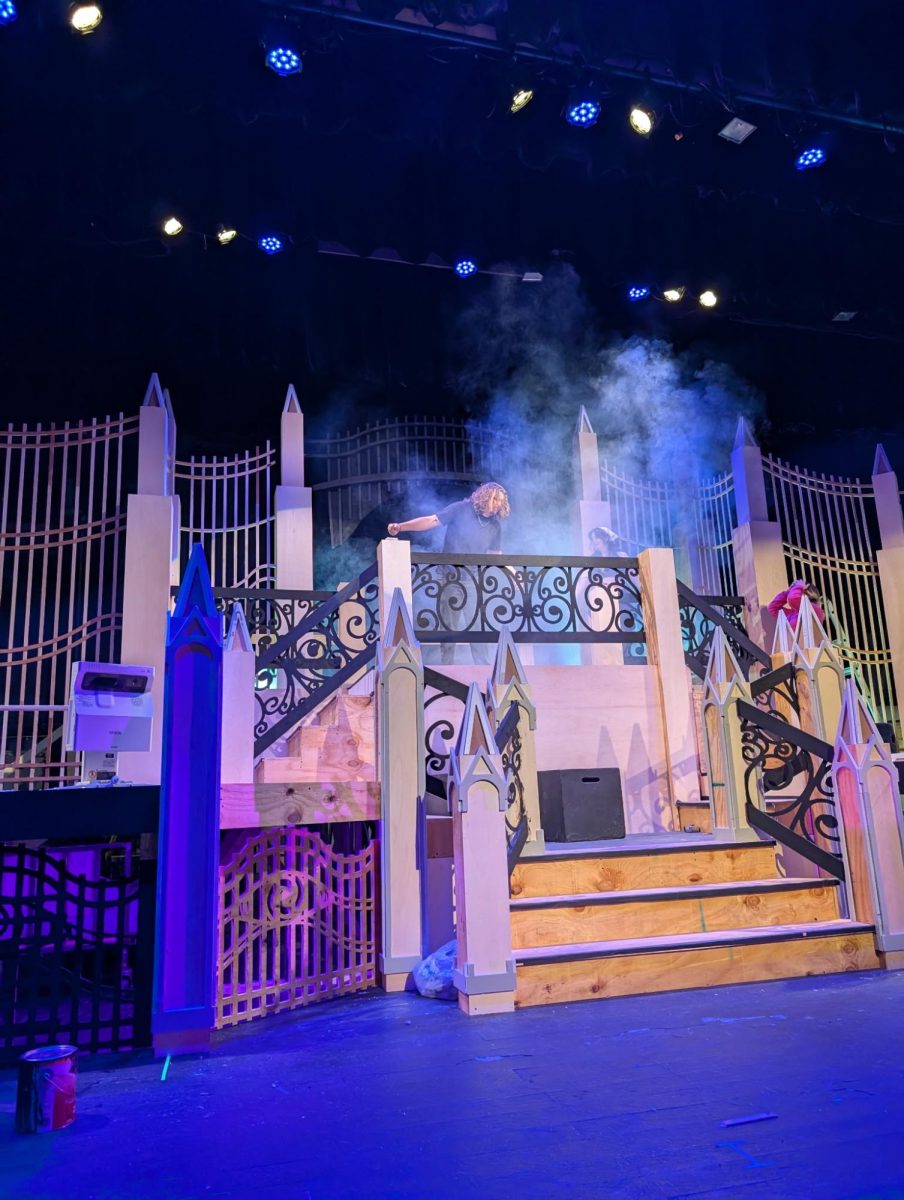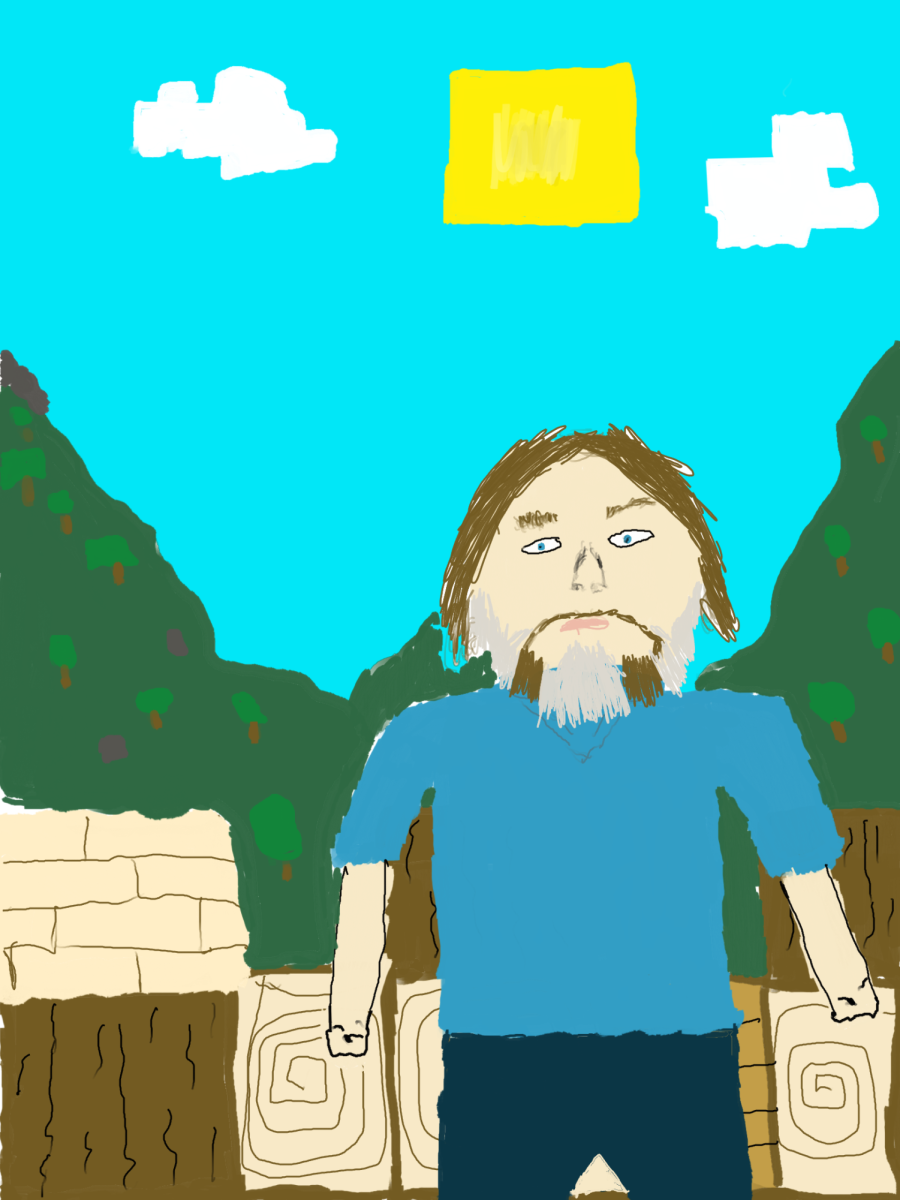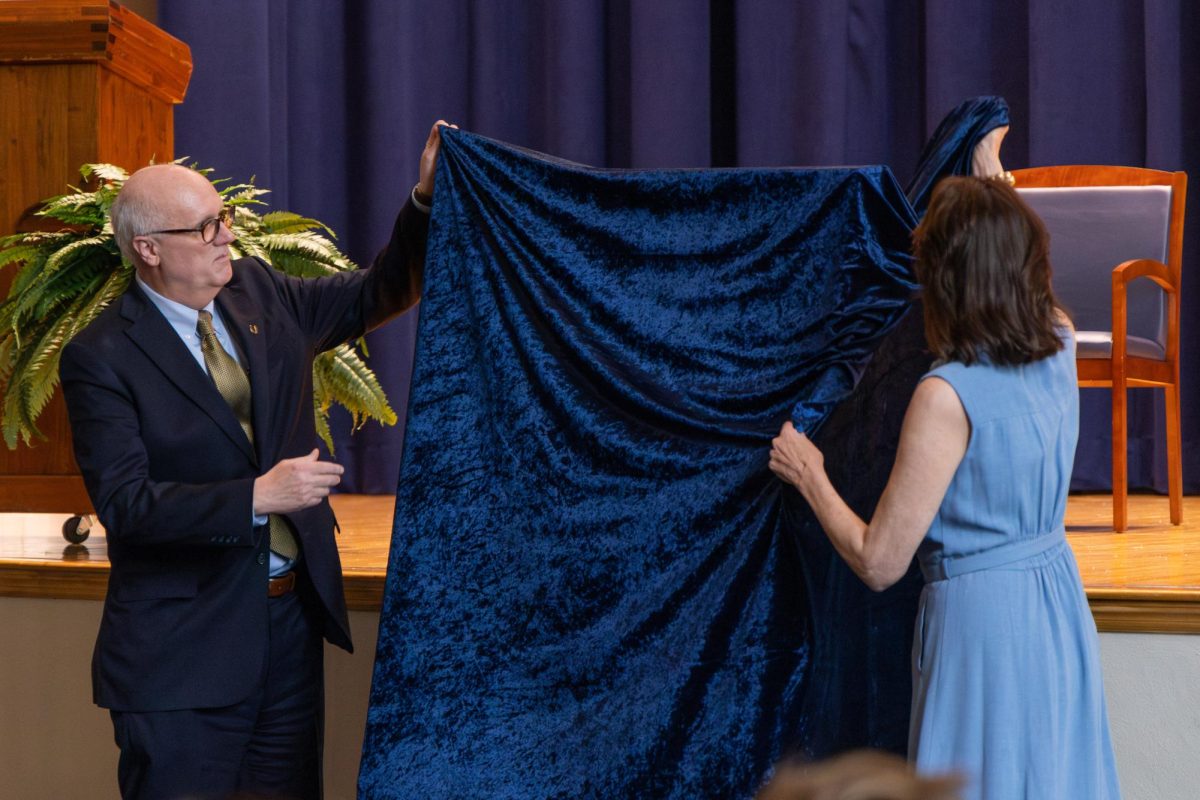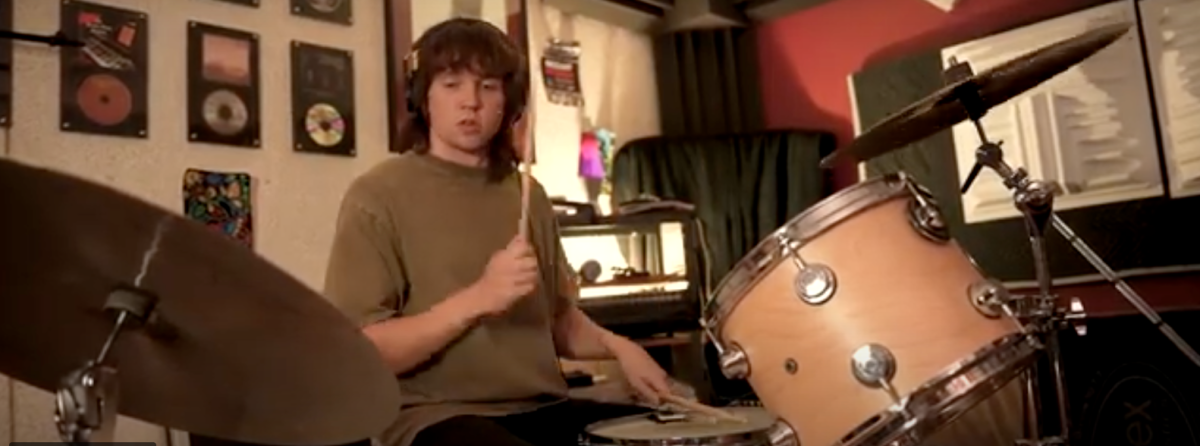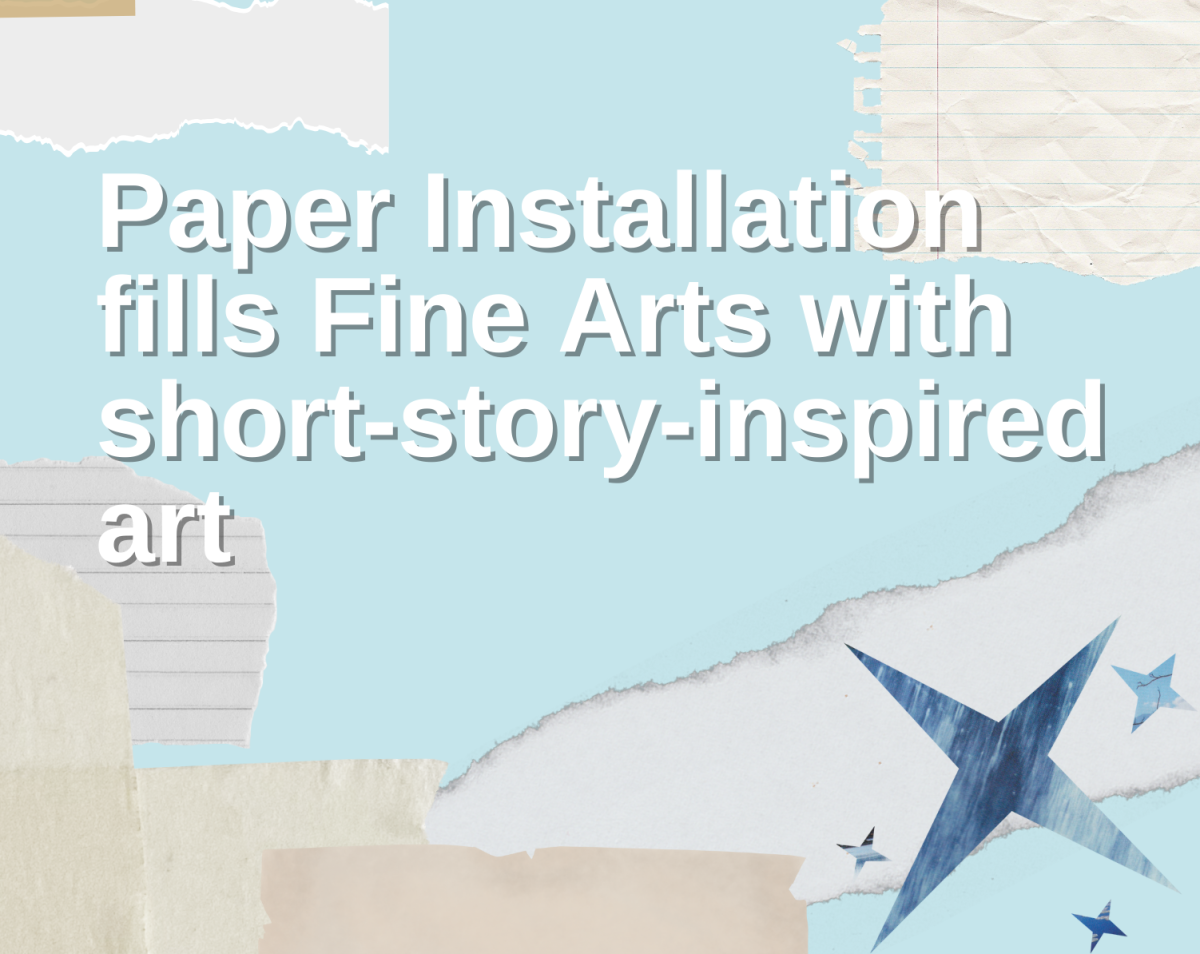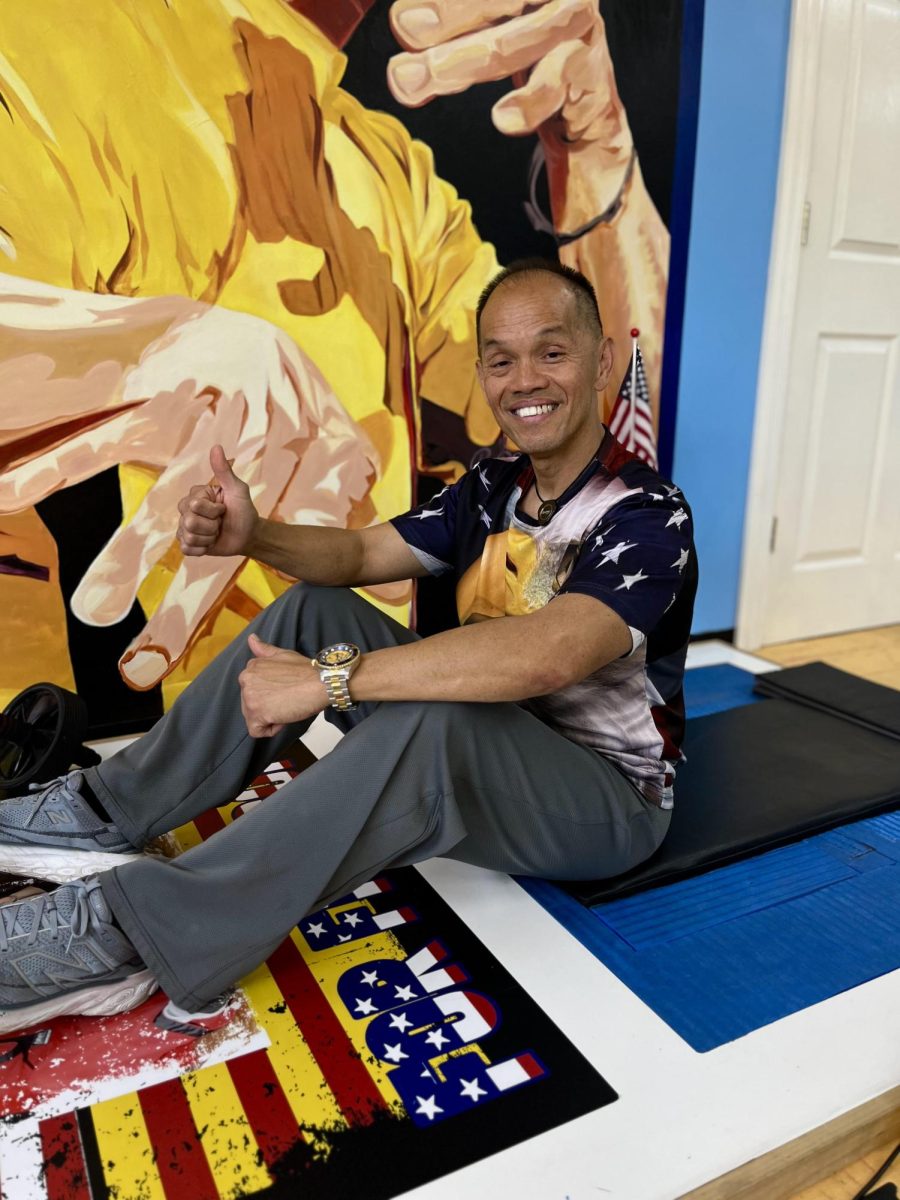Art students on campus bring life to the Fine Arts Center through elaborate paper-cut works inspired by a well-loved short story within the department.
Over the course of the fall semester, you may have seen more and more paper dotting the windows and walls of Price Doyle Fine Arts. What originally may have been large scrap pieces sprawled along the first, sixth and seventh floors of the building, students enrolled in ART 111– also known as Studio Practice – have worked to transform them into vivid recreations of scenes depicted in the short story “The Hemulen Who Loved Silence,” by Tove Jansson.
The installation consists of varying cut-out pieces of paper meticulously taped onto the walls and windows that each group of ART 111 occupies.
“The effective collaboration of my group allowed us to create many different pieces, which helped us to create a very detailed installation,” said Olivia Hargis, a sophomore art education major enrolled in the course.
The Studio Practice class is designed to give students experiences with composing artworks in both 2D and 3D formats, with the process helping them gain an understanding of working collaboratively.
“They were asked to use a monochromatic palette of (white) paper, as well as to think about negative space in strong consideration over positive space, thus the cut-outs,” said Jeanne Beaver in collaboration with the other professors from the course, “For the compositions, issues of scale, proportion and repetition become important when thinking about how to creatively use the space provided.”
The paper-cut installation project itself has been part of the Studio Practice class since 2016, with the short story being chosen by John Utgaard, one of the professors teaching the class.
“John and I share a love for the art and writing of Tove Jansson. It is a selection that appeals to all ages,” Beaver said. “She wrote so well of the interlinking of joy and sadness in her works. Melancholy can be so richly beautiful. The designs of the windows illustrate imagery and events in the story directly.”
The students began the creation process by deciding on a scene from Tove Jansson’s short story. Afterward, the students determined what objects in the scene they wanted to include and mapped out where the items would be installed. After this ‘blueprint’ was finished, students then cut out all the parts in their pieces. Hargis, alongside her group, chose to portray the amusement park described at the beginning of the story.
“When other students see the installation, I hope to convey a sense of appreciation for artists who create such detailed paper-cutting works,” Hargis said. “I hope that the different portrayals of the story will encourage students to read the short story for themselves so they can fully enjoy the installations we created.”
Their work sits on the first floor of Price Doyle Fine Arts, plastered onto the left-corner window that looks into the Zen Garden.
“I loved working on this project and am very proud of how we were able to create many components from the story,” Hargis said. “I loved getting to see how other groups reacted to the story and seeing how they stylized their portrayal.”
Students just passing by the installation appreciate these many stylized portrayals of the short story. Jesse Hutchens, a junior finance and computer information systems major, said he admired the installation for its creative and innovative nature.
“It’s very unique how they can take a short story and really animate it in the artists’ own creative liberties,” Hutchens said. “I feel like I have a better understanding of the artists and their abilities through their representation of this story.”
De-installation of the paper-cut works began earlier last Monday but with ART 111 being offered exclusively in the fall, art students are invited to take part in the creation process or to admire the work of those enrolled.
“Art classes are only as interesting as the people who populate them, and these are very interesting people,” Beaver said.



